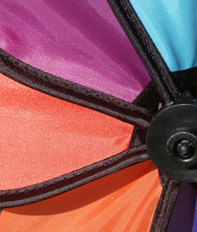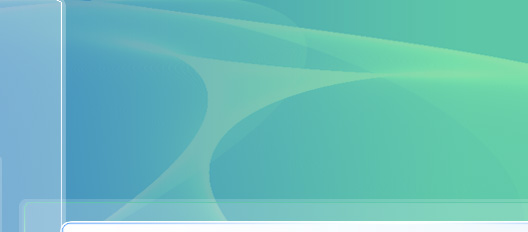








 |
 |
 |
 |
 |
 |

Q: WHAT IS SCREEN PRINTING? A: Screen printing is a process though which ink is mechanically applied to a substrate via the use of a screen and squeegee. This can be done utilizing manual, or semi-automatic, or automatic printing presses. In it's basic form, screen printing is a very simple process. Next, individual screens are prepared for each color. The screen is a rigid frame that has a fine monofilament nylon mesh stretched over it. The mesh has been coated with a light sensitive emulsion that will become the stencil through which the ink will pass when printed. The screen is then mounted, with the separation film, in a light exposure unit. This unit exposes the screen to high intensity UV light. When the UV light hits the emulsion a chemical reaction hardens the emulsion making it water and solvent resistant. The separation film with image acts as a shield to block the light in image area of the screen. These "soft" areas (which were not exposed to the light) are then rinsed away using water leaving the open area (stenciled image) in the screen. The screen(s) are then mounted on the press and each color is registered, or aligned, so that each color prints in the proper location relative to the other colors. Ink is loaded into the screens and squeegees are installed. The actual printing is accomplished by pushing ink through the screen and onto the shirt with the squeegees. As the squeegee scrapes across the screen it fills the stencil with ink while simultaneously bending the mesh down to transfer the ink to the shirt. A: Spot-Color is the term used to describe separation and printing with one ink color for every color in the design using plastisol opaque inks. Each color that makes up the composite image will be printed using a separate screen. Spot color printing can use halftones of a color to create the appearance of a gradient using small dots of the solid ink color(s). The small dots being printed so close together trick the eye into seeing the color they make when mixed. Q: WHAT IS SIMULATED PROCESS PRINTNG? A: Simulated Process is an advanced printing technique that uses halftones of a few ink colors to simulate the colors in the original design. This process differs from 4-color process in that the inks are solid opaque inks (plastisol inks) colors and are usually printed on dark colored shirts. Because the shirts colors are normally dark, simulated process generally requires the use of an underbase. Simulated process requires relatively high mesh count screens. We generally use 280 or 305 mesh and 55-65 lpi seperations. Depending on the design, 4 to 6 ink colors may be needed to reproduce all subtle color variations. Most designs can be printed with 5 or 6 colors. This printing technique is limited to the number of print heads on the printing press. Q: WHAT IS 4-COLOR PROCESS (CMYK) PRINTNG? A: 4-color process is a more advanced separation and printing technique that uses 4 colors of transparent ink to produce the colors from the original design. The four ink colors: Cyan, Magenta, Yellow, and blacK (CMYK), are printed as halftones that interact with each other and the white background of the shirt to create color and tonal values. A wide spectrum of colors can be represented but some colors are impossible to produce. Not used to produce exact PMS color matches.
Q: WHAT IS AN UNDERBASE? A: An underbase is a layer of ink, usually white, that is printed under other color inks (including white) when printing on colored apparel. When printing most ink colors on colored garments the shirt color will show (bleed) though the ink, slightly. For instance, yellow ink printed on a royal blue shirt with no under base will look greenish. To prevent this, a layer of white ink, the under base, is printed first then flashed (quickly dryed at an extremely high temperature) to allow the yellow ink to be printed on top. The under base gives the top color(s) a good neutral base and reduces the shirt color showing through. Most people are familiar with painting a room in their house. The base is painted first, allowed to dry, and then the paint color chosen for the room is painted on top of the under base. Principle is bascially the same. For shirt printing we speed up the drying time of the under base using flash/cure units before the final ink color(s) is printed on shirts. As always, there are exceptions to this. Some art may be developed for shirts that take into consideration the shirt color (e.g.; washed out look prints, faded prints, etc.), where no under base is desired. Please indicate in your order if no under base is desired. Q: WHAT IS FLASHING OR FLASH DRYING/CURING? A: Flash curing is the process of drying "gelling" a layer of ink (under base) with a spot heating unit while the shirt is still on press. To "gel" the ink layer, the temperature of the ink is raised to the point where the ink begins to dry but is not completely cured. The ink will be dry to the touch and will form a solid surface to print additional color(s) on. When the apparel is run through the curing drier at the appropriate duration and temperature, the flashed layer will cure completely and bond to the ink layers on top. |

















